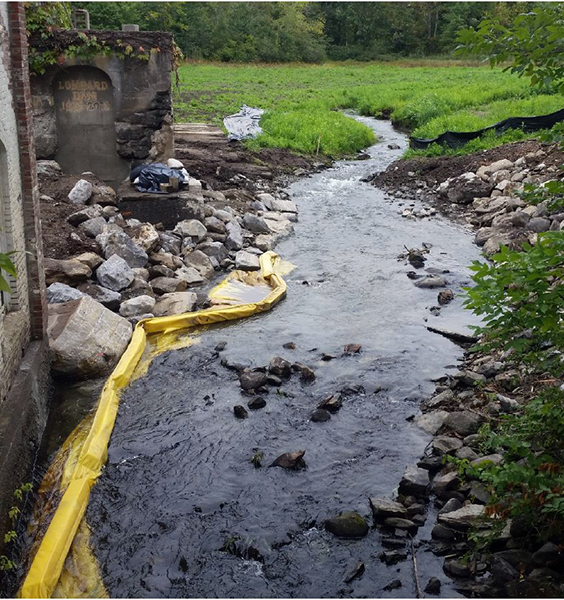Lombard Dam Removal



Maine Rivers, as part of the larger Alewife Restoration Initiative (ARI), required engineering design, permit, and construction support for the removal of the Lombard Dam in the Town of Vassalboro.
Kleinschmidt initiated the project by conducting a due diligence assessment to identify any project data gaps and evaluate any visible conditions that could impact the project design, schedule, or cost. We completed a structural assessment based on an onsite structural condition inspection of the dam that included observations of the dam, spillway, gatehouse, and abutments to determine structural deficiencies and develop designs for corresponding repairs. We conducted a wetland delineation and vernal pool survey to support the permitting efforts. Kleinschmidt created and calibrated a HEC-RAS model of the existing and proposed conditions that was used to assess fish passage requirements, evaluate impacts on flooding, and size material for the restored stream channel. Kleinschmidt developed a design suitable for inclusion in the permit applications and finalized the design following comments by project partners and regulators. The design objective was to restore aquatic connectivity (for alewives, American eels, and resident species), maintain the historic powerhouse, and reduce the owner’s risk exposure, while conforming to standard engineering practices for dam decommissioning, including sequencing of removal, reuse of onsite materials, and natural channel design concepts. The design included the removal of the spillway and west abutment, design of a restored stream channel in the immediate vicinity of the dam, and preservation of the existing powerhouse.
Thanks to the lessons learned on several similar dam removal projects, Kleinschmidt’s accelerated schedule was designed to beat the stipulated timeframe, ensuring that the project partners met their funding calendars. This project also came in on budget due to Kleinschmidt’s presence on-site during key aspects of the construction phase, which facilitated quick design improvements based on conversations between the design engineer and contractor, as well as design changes to address last minute-landowner requests.
